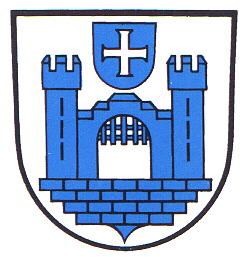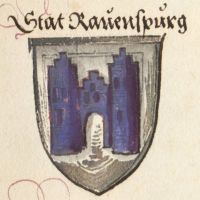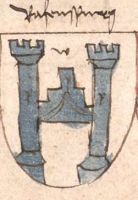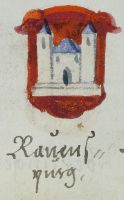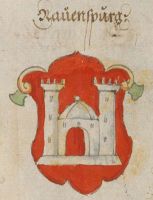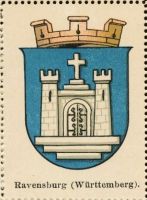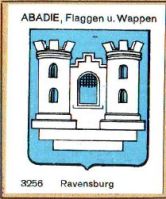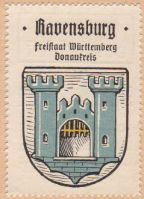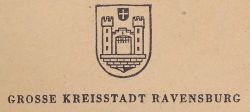Ravensburg: Difference between revisions
Knorrepoes (talk | contribs) m (Text replacement - "{{de}}" to "") |
Knorrepoes (talk | contribs) m (Text replacement - "|'''English''' ↵| {{blazon wanted}}" to "|'''English''' | blazon wanted") |
||
| Line 17: | Line 17: | ||
|- | |- | ||
|'''English''' | |'''English''' | ||
| | | blazon wanted | ||
|} | |} | ||
Revision as of 07:32, 8 April 2023
RAVENSBURG
State : Baden-Württemberg
District (Kreis) : Ravensburg
Additions : 1972 : Schmalegg, Taldorf; 1974 Adelsreute, Eschach
| German |
In Silber auf gemauerter blauer Konsole eine doppeltürmige blaue Burg mit hochgezogenem Fallgatter; zwischen den Zinnentürmen ein blauer Schild, darin ein silbernes Kreuz mit Tatzenenden. |
| English | blazon wanted |
Origin/meaning
The town was founded by the Lords of Welfen in the 12th century. It became a free imperial city in the 15th century and was incorporated in Württemberg in 1810. The arms show a castle, which already appeared on seals from the 13th century and on the arms in 1400. On a seal from 1270 the small shield with the cross appears. There are two possible origins for the cross. The first is that they are a memory of Konrad of Hohenstaufen, who originated from the area, and who became King of Jerusalem. The cross is the arms of Jerusalem and were placed in the arms to his honour. Another, more likely, explanation is that the cross is the symbol of Duke Welf IV (died 1107) who was a crusader and brought a piece of the cross of Christ back to the monastery in [Weingarten]].
The arms in a 16th century manuscript
The arms in the Wappen-Sammlung (+/- 1910)
The arms in the Abadie albums
The arms by Hupp in the Kaffee Hag albums +/- 1925
Literature: Stadler, 1964-1971, 8 volumes.
